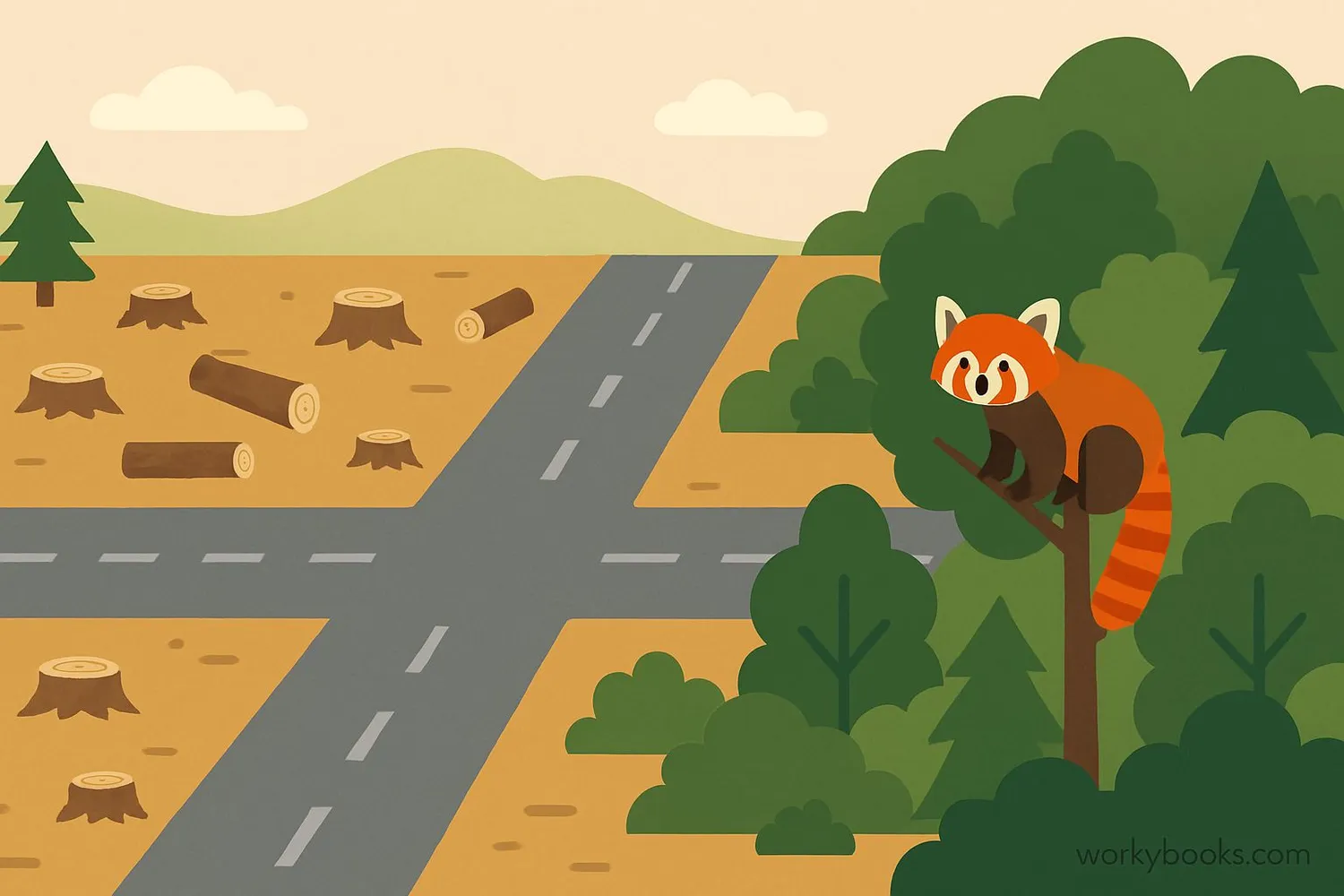Red Pandas - Definition, Examples, Quiz, FAQ, Trivia
Discover these amazing mammals and learn how we can protect them
What is a Red Panda?

The red panda is a small mammal that lives in the mountain forests of Asia. Despite their name, they're not closely related to giant pandas - they actually belong to their own unique family called Ailuridae. Red pandas are about the size of a house cat, with beautiful rust-colored fur, a long bushy tail with rings, and a masked face that looks similar to a raccoon.
These amazing creatures are sometimes called "fire foxes" or "lesser pandas." They're excellent climbers with semi-retractable claws and a special "false thumb" that helps them grip bamboo. Red pandas are mostly active at dawn and dusk, making them crepuscular animals.
Did You Know?
Red pandas were discovered 50 years before giant pandas! They got the name "panda" first, and scientists later named the larger black-and-white bears after them because of some similarities in their bamboo diet.
Habitat and Diet

Red pandas live in the temperate forests of the Himalayas, at elevations between 2,200-4,800 meters (7,200-15,700 feet). Their range extends across Nepal, India, Bhutan, China, and Myanmar. These forests are cool and misty, with lots of bamboo, trees, and moss-covered branches that make perfect habitats for red pandas.
Bamboo makes up 85-95% of their diet, but they also eat fruits, acorns, roots, and occasionally eggs or insects. An interesting fact: red pandas can only digest about 24% of the bamboo they eat, which means they need to consume large quantities - up to 20,000 bamboo leaves in a single day!
Habitat
Cool mountain forests with bamboo undergrowth
Range
Eastern Himalayas across 5 countries
Diet
Primarily bamboo, plus fruits and occasional protein
Feeding
Eat 20,000+ bamboo leaves daily
Adaptations
False thumb for gripping bamboo
Temperature Regulation
Red pandas use their bushy tails as blankets in cold weather! They wrap them around themselves to stay warm when sleeping in chilly mountain temperatures.
Why Red Pandas are Endangered

Red pandas are classified as Endangered by the International Union for Conservation of Nature (IUCN). Their population has declined by 50% over the last 20 years, with fewer than 10,000 individuals remaining in the wild. Several serious threats are causing this decline:
Habitat Loss
Deforestation for agriculture and development
Habitat Fragmentation
Roads and infrastructure dividing forest areas
Poaching
Illegal hunting for fur and the pet trade
Additional threats include climate change affecting their mountain habitats, diseases from domestic animals, and competition for resources. Because red pandas have such specialized diets and habitat needs, they're particularly vulnerable to environmental changes.
Conservation Efforts

Conservation organizations are working hard to protect red pandas through several approaches:
Protected Areas
Establishing and maintaining wildlife reserves
Community Involvement
Training local people as forest guardians
Education
Teaching communities about red panda conservation
How you can help protect red pandas:
Support Conservation Groups
Organizations like WWF and Red Panda Network work directly to protect these animals
Choose Sustainable Products
Look for FSC-certified wood and paper products to protect forests
Spread Awareness
Tell others about red pandas and their endangered status
Visit Responsibly
If you see red pandas at a zoo, choose AZA-accredited facilities
Red Panda Quiz
Test your knowledge about red pandas with this quiz! Answer all 5 questions to see how much you've learned.
Frequently Asked Questions
Here are answers to common questions about red pandas:
Red Panda Trivia
Discover some amazing facts about these fascinating creatures:
Unique Classification
Red pandas are the only living members of their family (Ailuridae). They're sometimes called "living fossils" because their ancestors date back millions of years.
Sweet Tooth
Red pandas love artificial sweeteners! In taste tests, they showed a strong preference for aspartame and other non-nutritive sweeteners - one of the few non-primate animals to do so.
The False Thumb
Red pandas have a special wrist bone that acts like a thumb, helping them grip bamboo. This adaptation evolved independently from the giant panda's similar feature.
Unique Communication
Red pandas communicate through various sounds including twitters, whistles, and even a "huff-quack" noise. When threatened, they may stand on their hind legs to appear larger!


